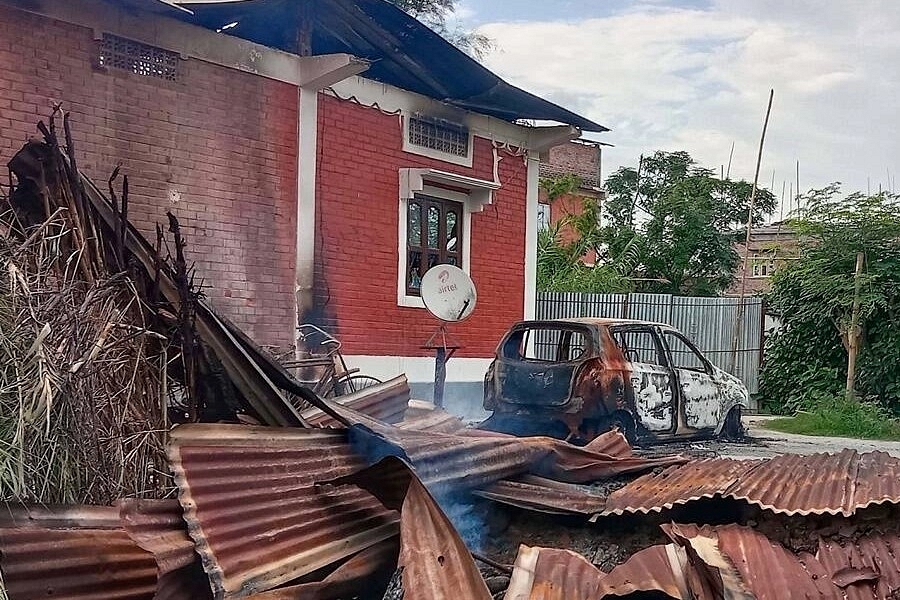SpeltAsStrength
Regular Member
- Joined
- Mar 13, 2022
- Messages
- 51
- Likes
- 109
The Meiteis, who make up about 60% of the population, currently reside in only 10% of the land area in Manipur, while the remaining regions, consisting of hill districts, belong to the tribal communities, mainly the Kukis and Nagas. However, the conflicts in Manipur reveal deeper divides beyond ethnic tensions. These include divisions between the valley and the hills, shifting and settled agriculture, state and non-state entities, and the perceived dichotomy between "civilized" and "anarchist" societies.
Anthropologist James C Scott, in his work "The Art of Not Being Governed - An Anarchist History Of Upland Southeast Asia," explains how state formation in valleys creates sections categorized as "non-state" that inhabit the hills. The key factor distinguishing state and non-state communities is the concept of "surplus." Communities practicing shifting agriculture in the hills, relying on frugal produce lasting from season to season, were excluded from the state formation process and designated as "non-state."
Historical examples demonstrate how settled rulers in indigenous societies maintained peace with hill tribes. For instance, the Ahom kings in Assam implemented the Post system, where villages provided essential goods to tribes during lean seasons in exchange for peace. The logic behind this system was that both parties would suffer in case of a raid, discouraging aggression and maintaining peace between the valley and the plains.
However, with the arrival of the British, the distinction between the state and non-state realms became more pronounced. The British categorized communities based on their perceived level of "civilization" and aligned them with British culture, governance, and society. The monetization of indigenous systems, such as replacing goods provided to tribes with cash, further deepened the divide between the state and non-state realms. Tribal chiefs were forced to engage with bureaucracy and become part of the "civilized" channels of administration.
The conflicts in Manipur reflect a complex interplay of historical, economic, and social factors. The clash between the Kukis and Meiteis goes beyond ethnic tensions, highlighting divisions rooted in land ownership, agricultural practices, and the historical imposition of state structures. Addressing these underlying issues is crucial for fostering reconciliation and long-term stability in Manipur.
Anthropologist James C Scott, in his work "The Art of Not Being Governed - An Anarchist History Of Upland Southeast Asia," explains how state formation in valleys creates sections categorized as "non-state" that inhabit the hills. The key factor distinguishing state and non-state communities is the concept of "surplus." Communities practicing shifting agriculture in the hills, relying on frugal produce lasting from season to season, were excluded from the state formation process and designated as "non-state."
Historical examples demonstrate how settled rulers in indigenous societies maintained peace with hill tribes. For instance, the Ahom kings in Assam implemented the Post system, where villages provided essential goods to tribes during lean seasons in exchange for peace. The logic behind this system was that both parties would suffer in case of a raid, discouraging aggression and maintaining peace between the valley and the plains.
However, with the arrival of the British, the distinction between the state and non-state realms became more pronounced. The British categorized communities based on their perceived level of "civilization" and aligned them with British culture, governance, and society. The monetization of indigenous systems, such as replacing goods provided to tribes with cash, further deepened the divide between the state and non-state realms. Tribal chiefs were forced to engage with bureaucracy and become part of the "civilized" channels of administration.
The conflicts in Manipur reflect a complex interplay of historical, economic, and social factors. The clash between the Kukis and Meiteis goes beyond ethnic tensions, highlighting divisions rooted in land ownership, agricultural practices, and the historical imposition of state structures. Addressing these underlying issues is crucial for fostering reconciliation and long-term stability in Manipur.
Last edited by a moderator:

